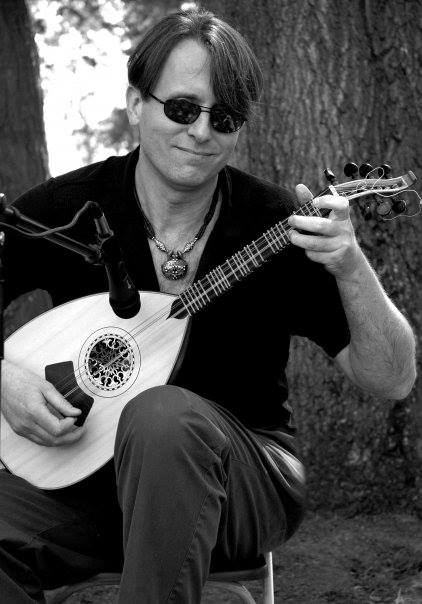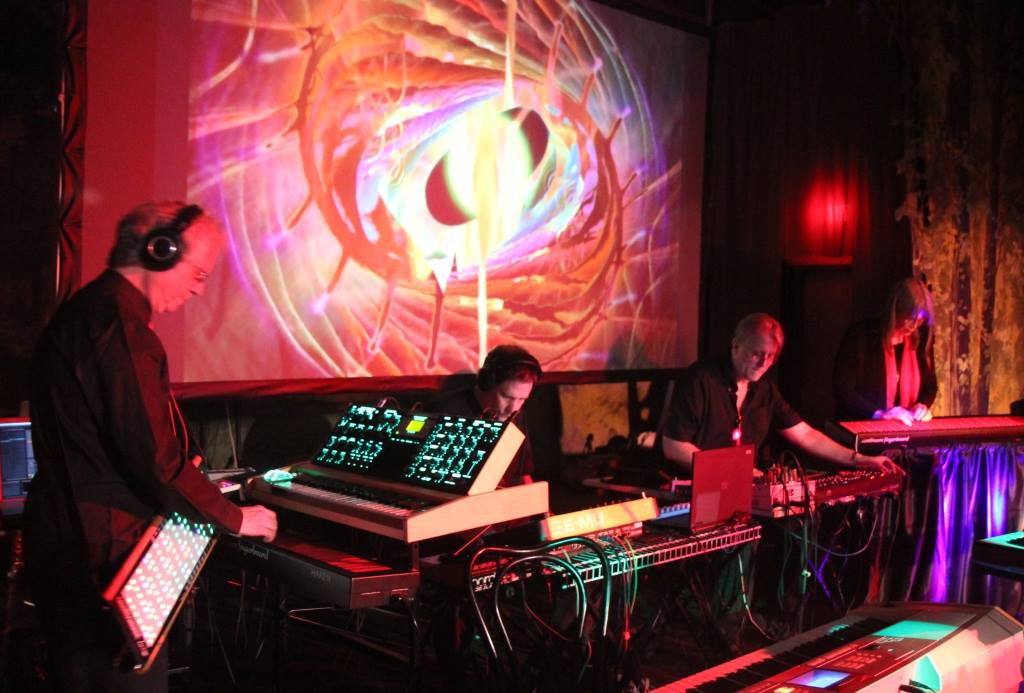By Keith Walsh
The equal tempered scale is so familiar, it’s sometimes hard for some of us to think about other tunings used in music around the world. But there’s always been value there. Anecdotally, I remember the excitement of hearing David Byrne’s and The Talking Head’s explorations of tribal music, which were often collaborations with Brian Eno. Peter Gabriel also went there, as did Paul Simon with his album “Graceland.”
Luckily for me there’s college radio in Southern California for as long as I can remember and now there’s the internet. And there’s Moog synthesizers. It turns out that Moog has made it easier than ever for musicians to explore alternate tunings. I spoke with Chris Stack, a composer with an engineering background about his exploration of world music and how he achieves his complex ethereal sound. (Stack has also worked with Bob Moog on the circuit board design for the multi touch keyboard, in the late 80s, when Bob was running Big Briar.)
I asked him how his interest in world music informed his use of alternate tunings on synthesizers. He writes: “One of the alternate scales that was included when the tuning update first came out for the Moog Little Phatty is called Husayni. It’s one of my favorites. It’s kind of like Dorian mode with the 2nd and 6th steps tuned ¼ tone (50 cents) flat. It therefore is made up of all whole tones and ¾ tones, almost like a whole tone scale with more melodic pull.”
“I play Husayni a lot on synths but also on stringed instruments. Since the oud is fretless you just have to know (and be able to hear) where to put your fingers. My lavta has ¼ and 1/8 tone frets so it’s no problem there either. This piece on my latest album has both synths and oud playing in that scale.”
While exploring Stack’s discography, I discovered a rich array of textures, often coming from authentic world instruments, including the oud, the shakuhachi, and the lavta. I asked him how he was introduced to world music. “I first got into Middle Eastern music by listening to Peter Gabriel ‘Passion’ soundtrack album and also by some of the songs on David Byrne and Brian Eno’s ‘My Life In The Bush Of Ghosts’ album. After that I started seeking out other similar electronic music, Sussan Deyhim and Richard Horowitz’s ‘Majoun’ was particularly inspiring, as was just about anything by Azam Ali.”

“From there I developed an interest in traditional acoustic instruments. Strangely, the first time I saw and heard an oud was on TV. Leonard Cohen was playing and there was an oud player in his band. I thought it was the most beautiful thing I’d ever heard. Still do. My interest in the shakuhachi and other bamboo flutes predates all this though. When I was a kid I was a big fan of the TV show ‘Kung Fu’. There was a lot of bamboo flute music in that show.”
Stack says that he’s open to influences and takes it from there.
“I’m not a staunch traditionalist. Music from around the world points me in some interesting directions but I usually wander off somewhere of my own making. So far, I haven’t gone too deeply into the more experimental tunings. Wendy Carlos’ ‘Beauty In The Beast’ was a big influence on me but I haven’t done a lot of work in that direction yet.”
“I should note that the scales I use often are equal-tempered approximations of more traditional scales. There is an argument to be made that more traditional scales are based on Just Intonation and the tuning of the ¼ tones can vary from one locale to another. I do hope to work more with Just Intonation in the future though.”
Stack recommends “these books to anyone interested in diving deeper.”
The Music of the Arabs by Habib Hassan Touma
Music and the Power of Sound by Alain Daniélou
As a Moog fan, I wanted to ask Stack how easy it is to use Moog synths to create exotic scales.
Stack writes: “It depends on which Moog you’re talking about. On the Voyager on Model D it can be tricky. On others it’s easier. You basically go into a menu and retune the notes of the octave to what you want, plus or minus however many “cents” you want it to be. So, for instance if you tune F to be 50 cents sharp, every F up and down the keyboard will be 50 cents sharp. The “cent” here is a unit of tuning. 100 cents equal one-half step.”
“One thing to note, when the tuning capability was added to the Moog Little Phatty as a firmware upgrade a lot of people thought they had loaded it wrong because they couldn’t hear the difference. A lot of the stock scales were historic western tunings that aren’t majorly different from equal temperament. It takes a really good ear to hear the difference on a monophonic instrument. Whenever anyone had doubts, we’d always say ‘Switch to Husayni. Does that sound different?’ It always did.”
“Anybody interested in working with tunings should also check out the work of my friend Karim El-Far. In addition to producing some top-notch middle eastern sample packs for instruments like the Korg Kronos, he also makes a very cool little hardware box that can be used to play alternate tunings on synths that don’t readily do that. Neat stuff!”
Alternate Tunings With Karim El-Far.
“He also has an iPad app for people who want to explore tunings. It’s a great way to hear how the different tunings sound.”
(After this was published, Stack admonished me with info about the fact that alternate tunings are possible on a variety of other synths. He cited the Yamaha M08, Korg Minilogue XD, and MIcroX as examples from his experience, in addition to using 1/4 tones on soft synths in Logic.)
I then asked Stack about some of his recordings, which are available on Bandcamp and are definitely worth a listen and your support. I asked: On the title track of Xenography, you incorporate some kind of world vocals, maybe chants? Where did you get these, or if you created them, what is the ethnological reference?
“Those are ~100-year-old recordings from an African-American tent revival,” Stack replies. “The preacher was right on the verge of speaking in tongues. That track was strongly influenced by ‘Bush of Ghosts’ and Peter Gabriel’s ‘Rhythm of the Heat’.”
Given Stack’s undeniable natural talent, I couldn’t help but wonder what his musical training is.
He replies; “I had maybe a year of piano lessons in a Catholic school convent when I was in the 2nd grade and a few guitar lessons off and on. Other than that, I’m self-taught. Plus, I’ve known a lot of really good musicians over the years and I pick their brains whenever I can.”

Finally, I asked ‘how has your E.E. background influenced your musical experiments?’
Stack writes: “The more you understand about how your tools do the things they do, the easier it is to imagine other interesting things for them to do.”
“Actually, it may be more accurate to say that my musical experiments led to my electronics studies. I had already bought three synthesizers (and a bunch of other keyboard instruments) by the time I started on my degree. That circuitous path is described in depth here:”
http://experimentalsynth.com/about
“One of my favorite quotes is:
“These are your tools. They’ll teach you things. They’ll teach you things you don’t even know you want to know.” – Laurie Anderson”